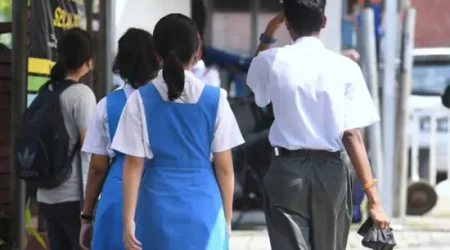RM168.7mil will be spent to address traffic congestion at Johor’s CIQs
JOHOR BARU: Projects worth more than RM168.7mil will be carried out at both of Johor’s customs, immigration and quarantine (CIQ) complexes to address the traffic congestion issues, says Datuk Seri Fadillah Yusof.
The Deputy Prime Minister said the projects include adding 44 MBIKE lanes at the Bangunan Sultan Iskandar (BSI) and Kompleks Sultan Abu Bakar (KSAB) CIQs, costing about RM61.7mil.
“Statistics showed that 71 million people used both CIQs last year since border travel resumed on April 1, 2022,” he said.
“For this year, about 98 million people have used both CIQs as of September, and we expect the figures to hit 136 million by the end of 2023,” added Fadillah.
He said this after chairing a meeting with a special committee to address the traffic congestion issues at both checkpoints at BSI here on Wednesday (Oct 11).
Fadillah attended the meeting virtually while Home Minister Datuk Seri Saifuddin Nasution Ismail, Works Minister Datuk Seri Alexander Nanta Linggi and Johor Mentri Besar Datuk Onn Hafiz Ghazi were present.
The Deputy Prime Minister said 21 initiatives had been planned to tackle the traffic congestion, and 15 of them had been completed while the rest are still ongoing as of Oct 10.
“Looking at the current and future needs, the committee has decided to add another four initiatives to set up more MBIKE lanes, construct a covered walkway on the Causeway and provide incentives for immigration officials on duty.
“We also agreed to merge the immigration clearance halls as well as upgrade and build new facilities at KSAB with a cost of RM106.9mil,” he added.
Before the meeting, the ministers, Onn Hafiz and the relevant government agencies visited the immigration clearance areas for pedestrians and vehicles to inspect the condition.
The MBIKE system was introduced in 2016 to help reduce congestion at entry points between Malaysia and Singapore by up to 50%.
It is similar to the autogates placed at all entry and exit points in Malaysia.
The system uses a radio frequency identification device (RFID) sticker attached to the holder’s passport, requiring them to place their thumb on the reader before the gantry gate opens.













Leave a Reply